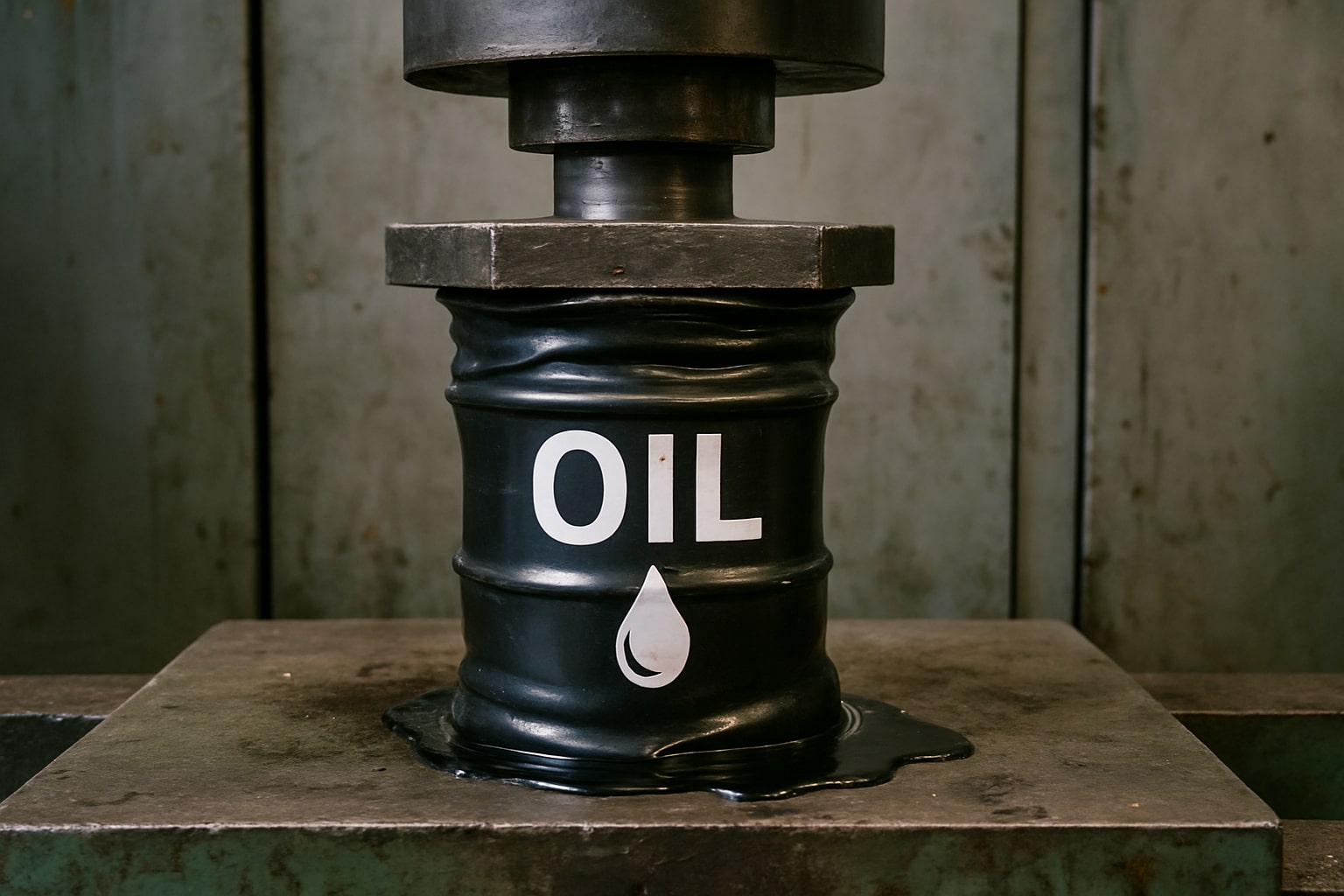Kurdistan Oil Exports Resumption and Global Uncertainties Drive Sharp Decline in U.S. Oil Prices
Iraqi-Kurdistan Agreement Impacts Oil Markets as Traders Navigate Economic Challenges
U.S. oil prices experienced significant losses on Monday due to the potential resumption of oil exports from Iraq's semi-autonomous Kurdistan region via Turkey's Ceyhan oil terminal. West Texas Intermediate (WTI) for May delivery declined by $1.69, or 2.05%, settling at $80.83 a barrel on the New York Mercantile Exchange. Meanwhile, Brent crude for June delivery fell by $1.55, or 1.8%, settling at $84.76 a barrel on the London ICE Futures Exchange.
The Iraqi federal government and the Kurdistan Regional Government (KRG) have resolved technical issues necessary for resuming oil exports via the Turkish port of Ceyhan. Turkey's Ceyhan port had stopped shipping oil from the Kurdistan region and Kirkuk province on March 25 following the International Chamber of Commerce's (ICC) ruling that oil exports from the Kurdistan region required approval from the Iraqi central government. This decision led to a loss of around 450,000 barrels per day in the international crude oil supply.
On April 4, the Iraqi federal government and the KRG signed an agreement to resume Kurdish oil exports via Turkey. Traders have been booking profits as oil prices struggle to gain additional momentum amid economic uncertainties. Christopher Lewis, an analyst with market information platform FX Empire, noted that traders were likely to pull back as they look to book gains in the absence of market momentum.
Despite pressure from some European Union countries like Poland, the Western price cap remains unchanged for now, according to a G7 source. Advocates of the cap argue that it reduces revenues for Russia while allowing oil to flow, while opponents claim it is too lenient to force Russia to reverse its actions in Ukraine. Data from Refinitiv Eikon indicates that most Russian Urals oil cargoes loaded in the first half of April are headed for Indian and Chinese ports.
India has accounted for over 70% of seaborne supplies of the grade this month, with China accounting for approximately 20%. Lower freight rates and smaller discounts for Urals against global benchmarks have pushed the daily price of the grade back above the cap earlier this month, following a period of trading below it. Neither India nor China has agreed to the price cap, but the West hoped the threat of sanctions might deter traders from assisting these countries in buying oil above the cap.
Shipping costs have significantly decreased in recent weeks as ice conditions in Russian ports have improved and more tankers have become available. Output cuts announced by the OPEC+ group of oil producers in early April have also boosted values for various grades globally, including Urals.
The U.S. dollar index experienced a substantial rise on Monday, which weighed on commodity prices denominated in the currency. India and China have purchased the majority of Russian oil in April at prices above the Western price cap of $60 per barrel, according to traders and Reuters calculations.
Oil prices fell for a second day on Tuesday as positive Chinese economic data failed to offset concerns over a possible increase in U.S. interest rates and broader worries about the growth outlook. The prospect of another U.S. interest rate hike, which has supported the U.S. dollar, continued to impact market sentiment. Traders anticipate the Federal Reserve will raise rates by 25 basis points at its May meeting.
U.S. crude inventories are expected to fall by about 2.5 million barrels, with declines also forecasted for gasoline and distillates. The resumption of northern oil exports from the Turkish port of Ceyhan by the Iraqi federal government and KRG has also exerted pressure on crude prices. The Kremlin appears to be enjoying stronger revenues despite the West's attempts to limit funding for Russia's military operations in Ukraine.
Brent crude dropped by 18 cents, or 0.2%, to $84.58 a barrel, while U.S. West Texas Intermediate slipped by 2 cents to $80.81.
In March, total retail sales of consumer goods in China rose by 10.6% year over year and grew by 7.1 percentage points compared to the first two months of the year. Industrial production output, encompassing activity in the manufacturing, mining, and utilities sectors, increased by 3.9% in March compared to the same period last year.
However, a key German investor sentiment survey weighed on crude, as optimism for the eurozone's largest economy remained downbeat in the coming quarters. Edward Moya, senior market analyst at OANDA, stated that the ZEW economic research institute reported a decline in economic expectations for Germany, falling to 4.1 in April from 13.0 in March.
Benchmark U.S. crude oil for May delivery slightly increased by 3 cents, settling at $80.86 a barrel on Tuesday. Brent crude for June delivery inched up by 1 cent, settling at $84.77 a barrel. Wholesale gasoline for May delivery fell by 2 cents to $2.75 a gallon, while May heating oil dropped by 1 cent to $2.60 a gallon. May natural gas, on the other hand, rose by 9 cents to $2.37 per 1,000 cubic feet.Looking ahead, economic data will be in focus as the market has priced in a strong economic recovery in China and the avoidance of hard landings in Europe and the U.S., with WTI trading in the $80 range, according to analysts at Sevens Report Research. Although the path towards new year-to-date highs in WTI is narrow, it is possible, they said. Growth data in the U.S. and Europe will need to be "Goldilocks" while better-than-expected data from China would be a welcomed surprise.
A G7 source told Reuters on Monday the Western price cap would remain unchanged for now, despite pressure from some European Union countries, such as Poland, to lower the cap to increase pressure on Moscow. The latest data from Refinitiv Eikon, as reported by Reuters, suggested that Russian Urals oil cargoes that loaded in the first half of April are mostly heading to India’s and China’s ports.
















